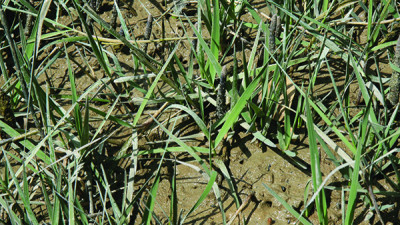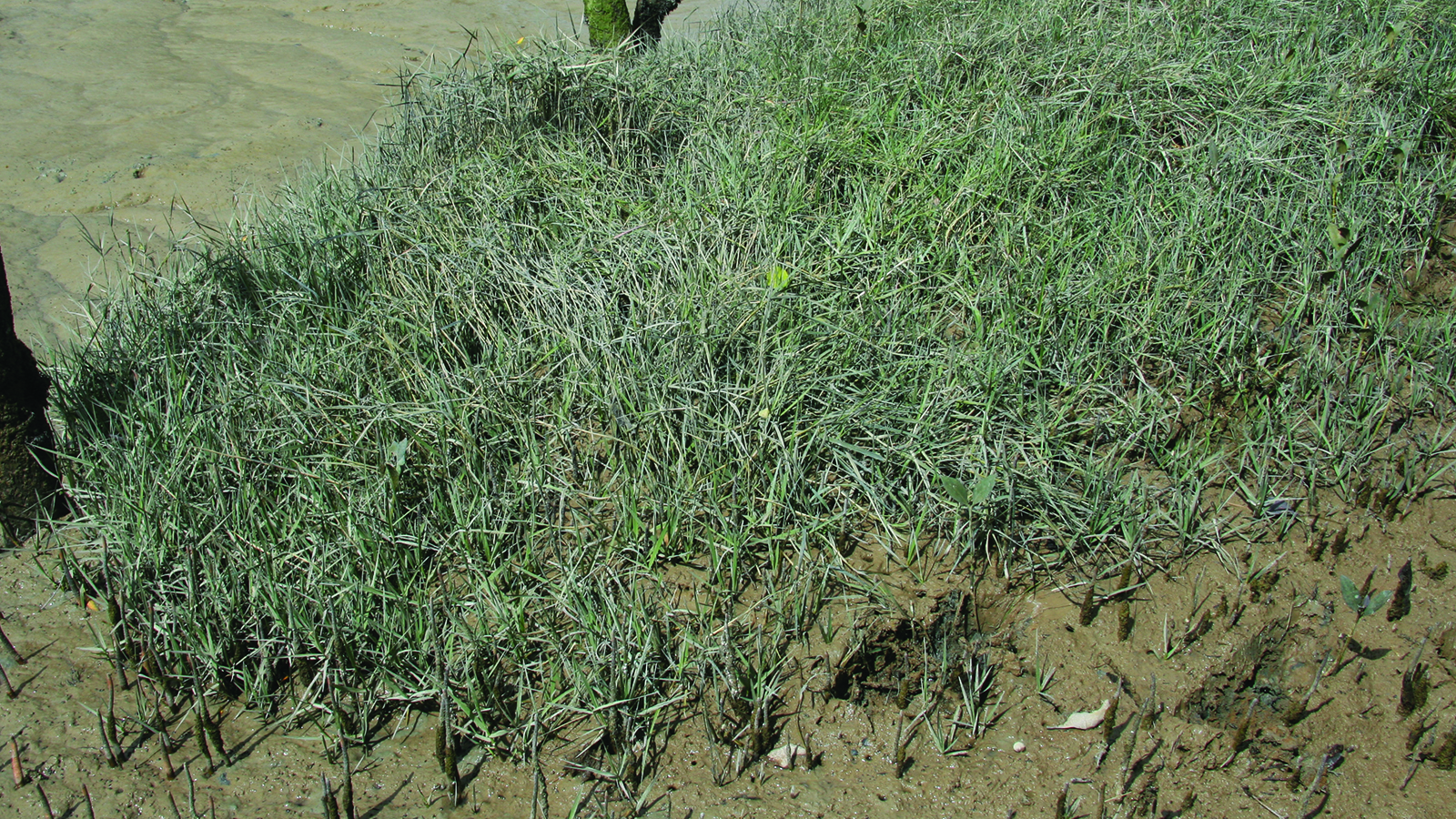| Management programme |
| Eradication. |
| Objectives |
| Reduce the level of infestation of Spartina within the Waikato region to zero density to prevent adverse effects and impact. |
| Impacts |
| Biodiversity, water quantity/quality, social and cultural wellbeing, amenity/recreation |
Spartina is native to North America and England. It was introduced to New Zealand deliberately to help bind sediment to reclaim estuaries and prevent stopbanks from eroding to extend areas for grazing stock.

What does it look like?
Size
- Spartina is a clumping grass that grows about a metre high.
Leaves
- Leaves are smooth to the touch and feel smooth when running your fingers back and forth, unlike grasses which feel rough one way.
- Alternate leaves are deeply wide-ribbed on upper surface and have ligules (1-3 mm long).
Flowers
- Flowers appear in groups at the tip of the plant.
Stalks/stems
- Stalks are very erect and thick when compared to other estuary grasses.
- Spartina alterniflora has a brownish/reddish colour to the stems.
- Spartina anglica has a greenish/blueish colour to the stems.
Seeds
- Seedheads are occasionally seen, and seed is occasionally produced at some sites.
Similar plants
Spartina is the only grass species found in the inter-tidal zone apart from the small native non-grass Zostera. Tall fescue, couch and other grass species are similar to Spartina, but none of these are found in the intertidal zone.
Where is it found?
Estuaries, mangroves and other intertidal zones with soft sediment.
Why is it a pest?
- Fast growing, spreading through underground rhizomes and smothering out native plants.
- Forms large clumps that hold on to sediment, altering natural flushing cycles of the estuary habitat.
- Takes away habitat for important estuary species such as wading birds, fish and invertebrates.
How does it spread?
Livestock, propellors, nets and so on dislodge rhizome fragments, which are then spread by tidal and current movement. Also spread through intentional planting. Can survive long term at sea, which means that it can travel long distances with the currents.
How do you get rid of it?
Spartina is exceedingly difficult to control. Please do not attempt to control it. Let us know if you think you have seen this plant or have it on your property by calling 0800 800 401 to report it to your local biosecurity pest plant officer.
More information
Publications
- The following publications are available for download or from Waikato Regional Council. Contact us to request a copy (freephone 0800 800 401).





